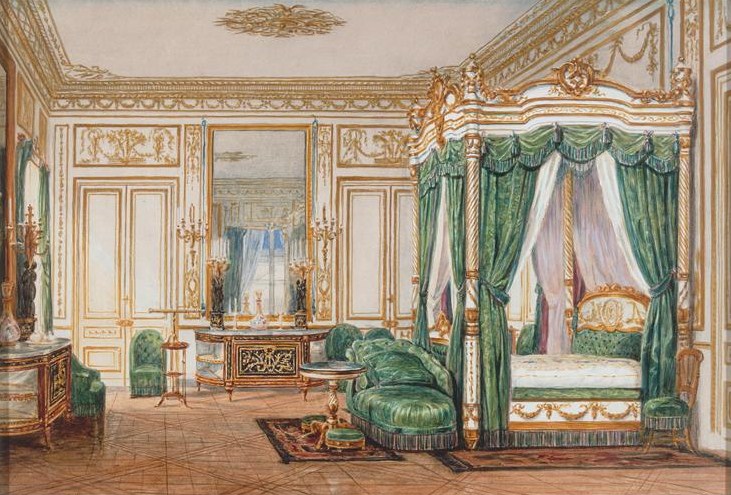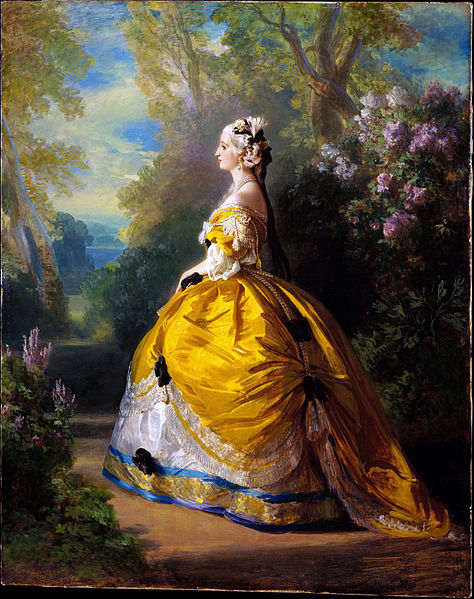 |
| Jean Baptiste Fortuné de Fournier Eugénie's bedchamber at the chateau of St Coud |
Empress Eugénie knew what she liked.
In matters of foreign policy she had strong opinions and she often held sway, and in dress and decoration,
she always had her way.
 |
| Eugénie wearing powder and panier as Marie-Antoinette Winterhalter |
The wife of Napoleon III identified with Marie-Antoinette.
To Marie-Antoinette's, l'autrichienne, she answered to another echoing sobriquet , l'espagnol.
When you are exploring the style Napoleon III, look closer, you may be looking at the style Louis XVI-Impératrice. The Garde-Meuble and even the Louvre contained the best examples of Louis XVI furnishings in Empress' day and she determined she would have them for her personal use. Sometimes she had made admirable copies of these pieces with the talent of perfectionist cabinet maker, Georges Grohé. With the addition of gold leaf and bronze she hoped to make these creations surpass the originals. Philippe Jullian gently mocked when he said "as a good Spaniard, she liked that which glittered. "
 |
The bed shown in the previous post where I spoke of the exhibit Folie Textile is a pure Louis XVI-Impératrice creation. It was made for the Palais de l'Elysée 146 years ago,but has lived its life at the Palais de Compiègne for 104 years. The Empress intended this bed to welcome Empress Elisabeth of Austria when she accompanied her husband Franz-Joseph on his visit to the 1867 World's Fair. Laure Chabanne's article in the exhibit catalogue states that the white and gold Louis XVI style bed was similar to two others already created for her own use at the chateau of St Cloud in 1855 and of the Tuileries in 1853. The thrice repeated style seems to have been a special way to honor Elisabeth to whom she was very close.

Having just undergone a 6 year restoration, the bed in all its Second Empire splendor is a key piece at the exhibit. 200 meters of emerald silk damask were woven by Georges Lemanach (which recently became part of the Pierre Frey group) to match the original ; 132 meters of fringe and 78 ornaments of passementerie - tiebacks, tassels, braid - were re-created by Declerq Passementier.
The headboard and the inside of the canopy retain the original 19th century tufting of a damask by Maison Mathevon et Bouvard, Lyon which has been restored, not reproduced and which accounts for the different color.
The Empress Sissy as it turned out did not accompany her husband to Paris on that occasion. The bed was never used, but stored until it was moved to the palais of Compiègne to join the imperial apartments and later the museum of the Second Empire. It remains as a strong reminder of Eugénie's taste and impressive example of the textile mania of the day.
all photos Musées et domaine nationaux du Palais de Compiègne © RMN –Grand Palais (domaine de Compiègne) / Christophe Chavan

No comments:
Post a Comment